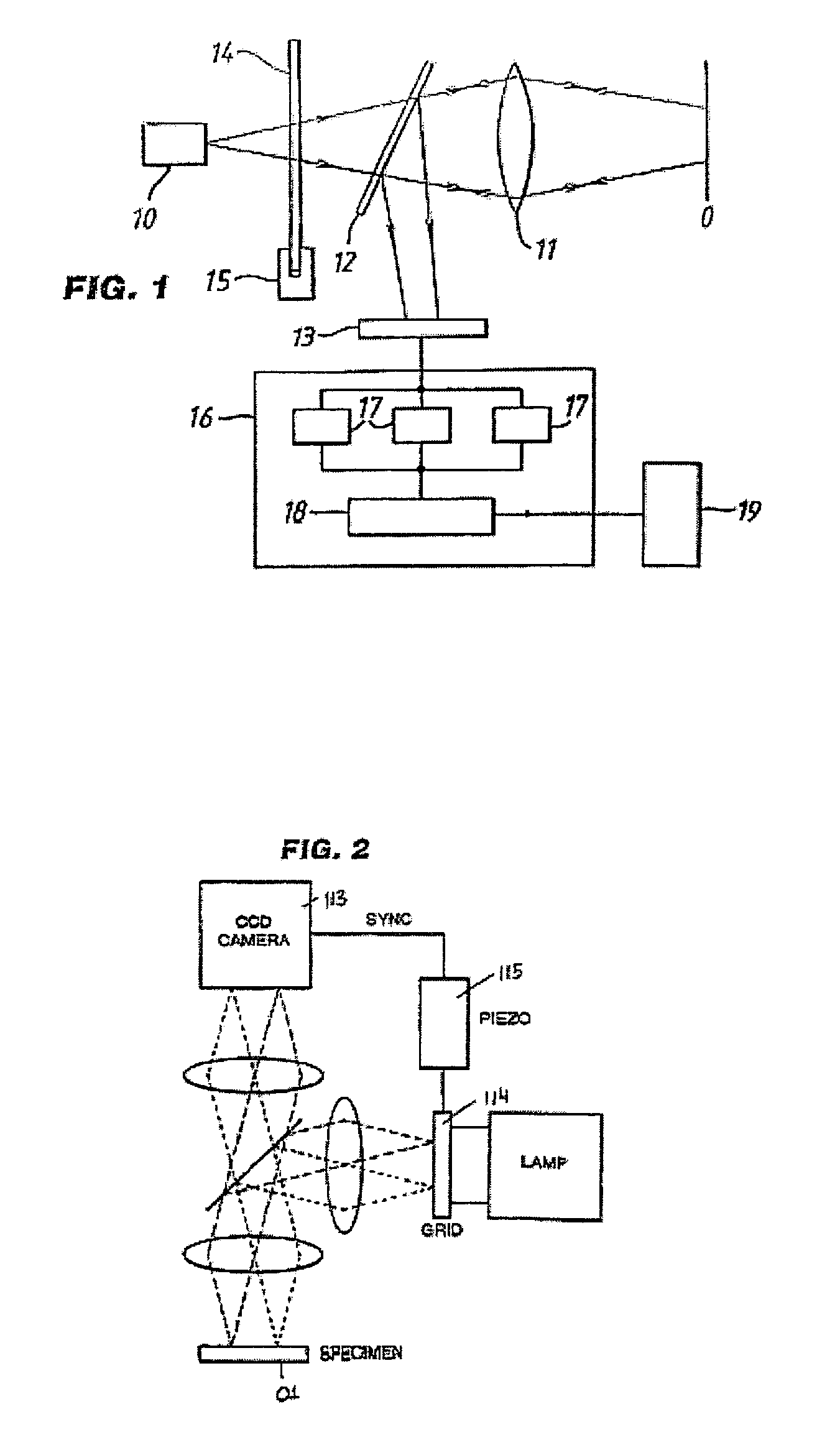Methods, systems and computer program products for calibration of microscopy imaging devices
a microscopy and imaging device technology, applied in the field of microscopy imaging apparatus, can solve the problems of poor light budget of confocal microscope, inability to successfully image three-dimensional structures, and inability to reject out-of-focus detail of conventional light microscopes
- Summary
- Abstract
- Description
- Claims
- Application Information
AI Technical Summary
Benefits of technology
Problems solved by technology
Method used
Image
Examples
example 1
Phase Calibration
[0076]This calibration method is based on a measurement of the phases (rather than being an optimization technique). Below is provided a theoretical background and a detailed procedure for this calibration technique.
A. Intensity Cross Section
[0077]The basis for the phase calibration technique is the intensity cross section and its Fourier Transform. Although this cross section and its transform are familiar, they are reviewed here for completeness. Shown in FIG. 6 is a cross section of a single intensity frame taken across the grid. In the calibration this data will be the average of 10 or so such cross sections for the purpose of noise reduction. Note that 210 points=1024 points are considered in order to leverage Fast-Fourier Transform (FFT) software.
B. The Fourier Transform of the Intensity
[0078]These sections provide a basic coverage of the FFT of the intensity cross section that will be used for the phase calibration. The phase of the FFT is used for the calibr...
example 2
Merit Function Calibration
[0136]The fidelity of the calibration can be determined by analyzing the second harmonic content of the residual lines. It has been found that the calibration error is the only thing that produces second harmonic residual lines. Therefore, the second harmonic content of the residual lines can be a metric function for the calibrations. The algorithm could be a damped optimization routine based on this merit function.
A. Calibration Merit Function Theory
[0137]Because the fidelity of the calibration is known to directly affect the second harmonic content of the imaging system data, what follows is a detailed look at this function vs. detuning of the calibration phases of the imaging system. A detailed procedure for evaluating the merit function from actual imaging system data is also discussed in this section.
[0138]1. Merit Function for Small Detuning
[0139]FIG. 17 shows the behavior of the second harmonic (normalized to the fundamental) for small deviations fro...
PUM
 Login to View More
Login to View More Abstract
Description
Claims
Application Information
 Login to View More
Login to View More - R&D
- Intellectual Property
- Life Sciences
- Materials
- Tech Scout
- Unparalleled Data Quality
- Higher Quality Content
- 60% Fewer Hallucinations
Browse by: Latest US Patents, China's latest patents, Technical Efficacy Thesaurus, Application Domain, Technology Topic, Popular Technical Reports.
© 2025 PatSnap. All rights reserved.Legal|Privacy policy|Modern Slavery Act Transparency Statement|Sitemap|About US| Contact US: help@patsnap.com



